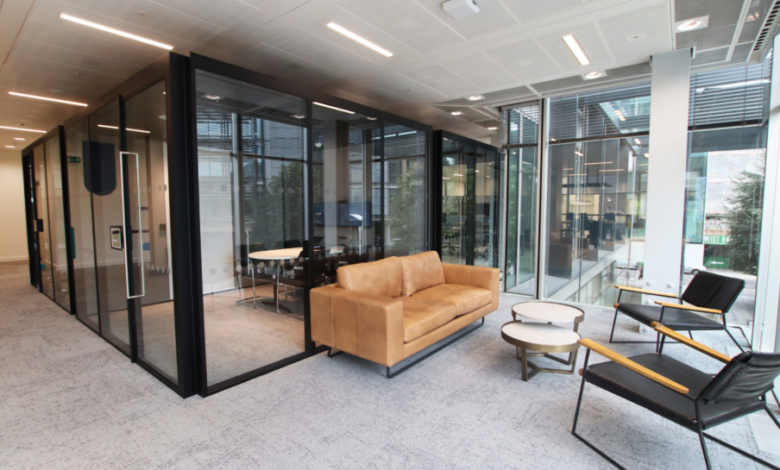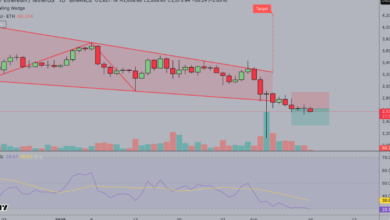How Much Does a Glass Partition Wall Cost?

In modern architecture, glass partition walls have become a popular design choice for both commercial and residential spaces. They blend elegance with functionality, transforming interiors with natural light, open aesthetics, and a sleek, contemporary look.
But one of the most common questions for anyone considering this upgrade is — how much does a glass partition wall cost?
The answer depends on several factors, including glass type, framing materials, dimensions, design complexity, and installation requirements. This article explores the key pricing factors, cost ranges, and the value that premium glass partitions bring to any space.
What Is a Glass Partition Wall?
A glass partition wall is a non-load-bearing wall system made primarily of tempered or laminated glass panels. Unlike traditional drywall or brick partitions, glass partitions create separation while maintaining visual openness.
They are widely used in:
- Office interiors
- Retail stores
- Restaurants and cafes
- Homes and apartments
- Hospitality and healthcare facilities
These partitions allow light to flow freely, making spaces feel larger, brighter, and more inviting.
Types of Glass Partition Walls
The type of glass partition you choose greatly affects the overall cost. Here are the most common varieties used in architectural projects:
1. Frameless Glass Partitions
Frameless systems feature clean, minimalistic lines with no visible metal framing. They offer a seamless aesthetic, ideal for luxury offices and modern homes.
- Cost range: $80 – $120 per square foot
- Pros: Elegant, open design
- Cons: Slightly more expensive installation
2. Framed Glass Partitions
These use slim aluminum or steel frames to hold glass panels securely. They are cost-effective, durable, and versatile for both residential and commercial uses.
- Cost range: $60 – $100 per square foot
- Pros: Durable, cost-efficient
- Cons: Slightly reduced transparency
3. Frosted or Privacy Glass Partitions
These feature etched, frosted, or tinted finishes to provide visual privacy while maintaining natural light. They’re perfect for meeting rooms, bathrooms, or bedrooms.
- Cost range: $70 – $110 per square foot
- Pros: Privacy-friendly, stylish appearance
- Cons: Limited view-through clarity
4. Acoustic Glass Partitions
Designed with soundproofing layers, these partitions are ideal for conference rooms, studios, or offices requiring quiet environments.
- Cost range: $100 – $150 per square foot
- Pros: Excellent sound insulation
- Cons: Higher material cost
5. Sliding or Folding Glass Partitions
These systems offer flexibility — you can open or close spaces as needed. They work well in multipurpose rooms or modern home interiors.
- Cost range: $120 – $180 per square foot
- Pros: Space-saving, modern look
- Cons: Complex installation
Factors That Affect the Cost of Glass Partition Walls
To estimate the true cost of installing a glass partition, consider the following factors:
1. Glass Type
Tempered glass is the most common choice due to its strength and safety properties. Laminated or acoustic glass typically costs more due to their advanced features.
2. Framing Material
Aluminum frames are lightweight and affordable, while stainless steel or black powder-coated frames cost more but offer superior durability and aesthetics.
3. Customization and Design Complexity
Custom sizes, special shapes, etching, or tinted coatings will raise the cost. Frameless designs with hidden fixings also require precision engineering and skilled installation.
4. Installation Requirements
Labor costs vary by region and project type. Complex installations — such as curved glass, tall partitions, or structural fittings — increase total expenses.
5. Location and Accessibility
In urban areas, especially where logistics or building access is limited, installation costs may rise due to transportation and handling fees.
Average Cost of Glass Partition Walls by Type
| Type of Glass Partition | Approx. Cost (per sq. ft.) | Best For |
| Frameless Clear Glass | $80 – $120 | Modern offices, showrooms |
| Framed Glass (Aluminum) | $60 – $100 | Commercial interiors |
| Frosted or Etched Glass | $70 – $110 | Bathrooms, meeting rooms |
| Acoustic Glass | $100 – $150 | Conference rooms, studios |
| Sliding/Folding Glass | $120 – $180 | Homes, restaurants |
| Curved/Custom Glass | $150+ | Luxury architecture |
On average, most commercial projects spend between $4,000 and $12,000 for complete glass partition installations, while smaller residential projects may range from $1,500 to $5,000.
Benefits of Installing Glass Partitions
Aside from their visual appeal, glass partitions provide several long-term benefits that justify the investment.
1. Enhanced Natural Light
Glass walls allow sunlight to travel across the entire room, reducing the need for artificial lighting and creating a healthy, vibrant workspace.
2. Open Yet Private Spaces
With options like frosted or tinted glass, you can maintain openness while ensuring privacy for meetings or personal areas.
3. Increased Property Value
Architectural glass systems enhance aesthetics and functionality, increasing your property’s resale appeal.
4. Energy Efficiency
Quality glass partitions reduce the need for artificial lighting and can help regulate temperature, contributing to energy savings.
5. Flexible Design Options
From minimalist frameless styles to industrial black-framed layouts, glass partitions can complement any interior theme.
6. Easy Maintenance
Tempered glass is durable and easy to clean — requiring only regular wiping to maintain clarity and shine.
See also: Why Professional Asbestos Removal Is Essential for Your Health
Commercial vs. Residential Glass Partitions
Both sectors benefit from glass partitions, but priorities differ slightly:
Commercial Spaces:
- Focus on productivity and acoustic control
- Often require modular and relocatable systems
- Prioritize durability and professional aesthetics
Residential Spaces:
- Prioritize design and natural lighting
- May include decorative or colored glass options
- Often feature smaller-scale installations
In both cases, choosing the right glass partition manufacturer ensures precision craftsmanship and long-term reliability.
Installation Process and Timeline
Installing a glass partition wall typically involves the following steps:
- Site Assessment: Measurements and design planning based on space requirements.
- Glass Fabrication: Cutting, polishing, and tempering the glass panels.
- Framing & Fittings: Preparing structural frames or channels for secure installation.
- Installation: Mounting panels and sealing joints to ensure stability.
- Finishing Touches: Adding handles, trims, or decorative features.
Depending on project size, installation can take anywhere from 1 to 5 days.
Safety Considerations
Modern glass partitions are engineered with safety and durability in mind. Tempered and laminated glass options resist impact and, in case of breakage, crumble into small, harmless pieces.
To ensure safety and quality:
- Always use certified glass and fittings
- Hire experienced installers
- Verify load-bearing and compliance standards
When you work with a reputable company like MANNLEE, you can trust that every system meets the highest safety and aesthetic standards.
Design Trends in Glass Partitions
Architectural trends continue to evolve, and glass partitions are at the forefront of interior design innovation. Here are a few popular trends:
1. Black Grid Framing (Industrial Style)
Inspired by loft design, this style uses black aluminum frames that give a bold, modern edge.
2. Smart Glass Technology
Switchable glass transitions from clear to opaque at the touch of a button, offering instant privacy.
3. Curved and Textured Glass
These add dynamic forms and artistic depth to interiors, especially in luxury environments.
4. Floor-to-Ceiling Minimalism
Seamless panels create uninterrupted visual flow, ideal for corporate offices and galleries.
5. Glass and Metal Hybrid Systems
Combining glass with bronze or brass finishes adds warmth and sophistication to commercial spaces.
Choosing the Right Glass Partition Manufacturer
Selecting the right partner for your glass partition project ensures both design quality and technical performance.
When choosing a glass partition manufacturer, consider:
- Experience in both commercial and residential projects
- Range of materials and customization options
- Compliance with local building codes
- Quality assurance and after-sales support
A trusted manufacturer like MANNLEE delivers not only superior glass products but also end-to-end project solutions — from consultation and fabrication to installation and maintenance.
Cost-Saving Tips
If you’re planning to install glass partitions on a budget, here are a few ways to reduce costs without sacrificing quality:
- Opt for Standard Sizes: Custom cuts add cost — choosing standard dimensions can lower expenses.
- Choose Framed Options: Framed systems are often more affordable than frameless designs.
- Limit Special Coatings: Decorative etching or tinted finishes increase cost; use them selectively.
- Bundle Services: Some manufacturers offer discounts for bulk orders or multi-room installations.
By consulting with an expert supplier early, you can balance aesthetics and affordability effectively.
Long-Term Value of Glass Partition Systems
While glass partitions may initially cost more than traditional walls, they offer long-term returns through energy savings, enhanced productivity, and improved space utilization.
They also support sustainable building practices — especially when made with recyclable materials and low-emission coatings.
For property developers and architects, these benefits translate into higher property valuation and greater tenant satisfaction.
Final Thoughts
The cost of a glass partition wall depends on design preferences, materials, and installation scope — but the value it brings to a space is undeniable.
From modern offices to stylish homes, glass partitions add sophistication, efficiency, and flexibility to interior layouts.





